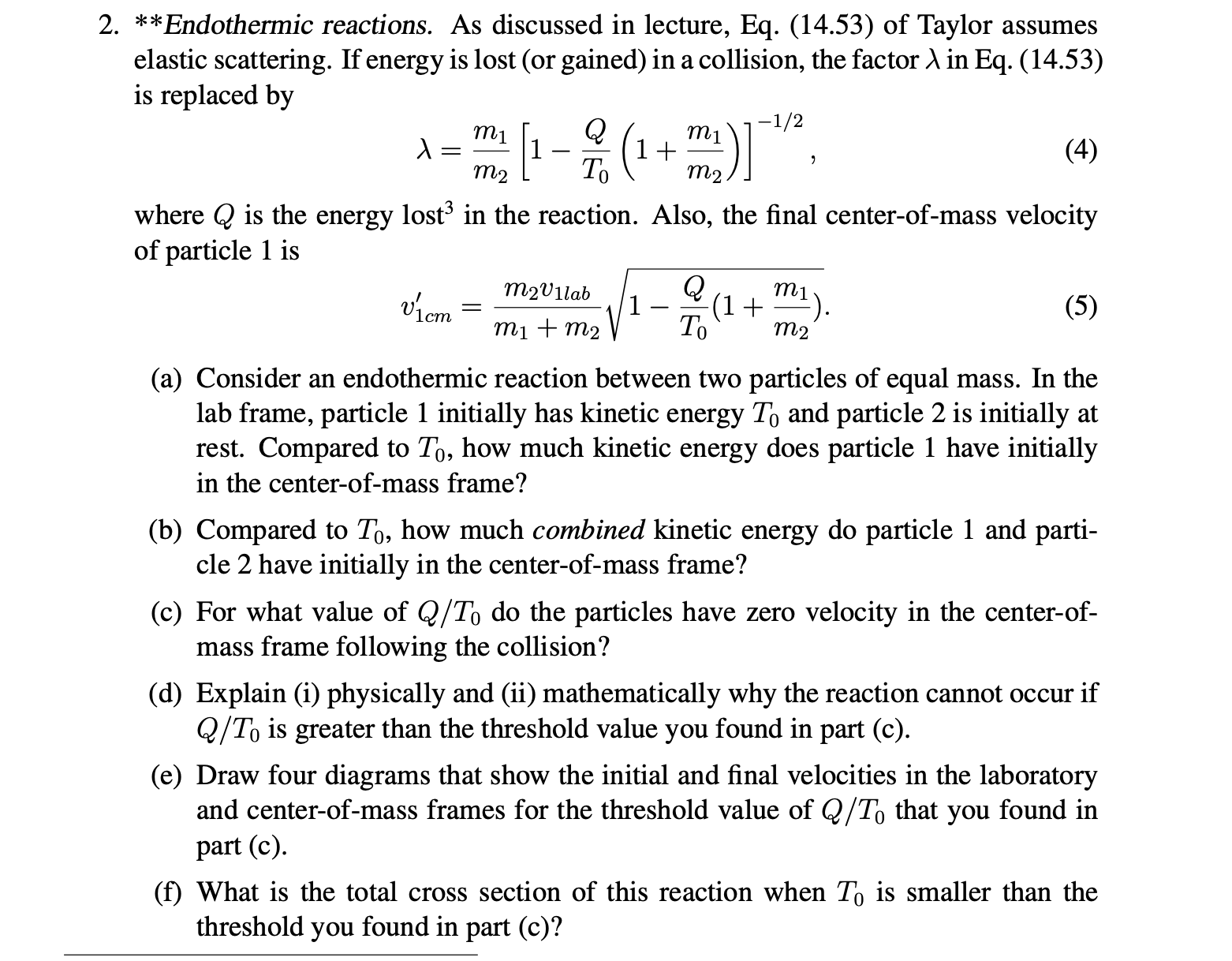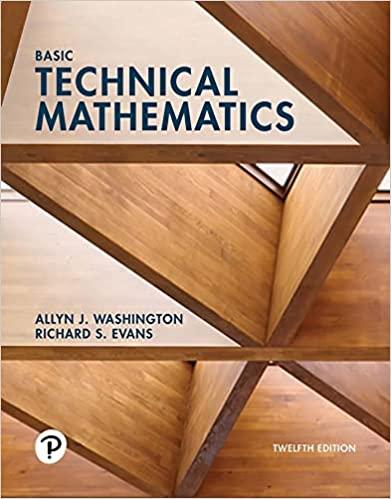Answered step by step
Verified Expert Solution
Question
1 Approved Answer
2. **Endothermic reactions. As discussed in lecture, Eq. (14.53) of Taylor assumes elastic scattering. If energy is lost (or gained) in a collision, the

2. **Endothermic reactions. As discussed in lecture, Eq. (14.53) of Taylor assumes elastic scattering. If energy is lost (or gained) in a collision, the factor \ in Eq. (14.53) is replaced by m1 Q -1/2 m1 = 1+ m2 To m2. (4) where Q is the energy lost in the reaction. Also, the final center-of-mass velocity of particle 1 is viem = m2V1lab m1 + m2 Q a (1+ M1 To M2 (5) (a) Consider an endothermic reaction between two particles of equal mass. In the lab frame, particle 1 initially has kinetic energy To and particle 2 is initially at rest. Compared to To, how much kinetic energy does particle 1 have initially in the center-of-mass frame? (b) Compared to To, how much combined kinetic energy do particle 1 and parti- cle 2 have initially in the center-of-mass frame? (c) For what value of Q/To do the particles have zero velocity in the center-of- mass frame following the collision? (d) Explain (i) physically and (ii) mathematically why the reaction cannot occur if Q/To is greater than the threshold value you found in part (c). (e) Draw four diagrams that show the initial and final velocities in the laboratory and center-of-mass frames for the threshold value of Q/To that you found in part (c). (f) What is the total cross section of this reaction when To is smaller than the threshold you found in part (c)?
Step by Step Solution
There are 3 Steps involved in it
Step: 1

Get Instant Access to Expert-Tailored Solutions
See step-by-step solutions with expert insights and AI powered tools for academic success
Step: 2

Step: 3

Ace Your Homework with AI
Get the answers you need in no time with our AI-driven, step-by-step assistance
Get Started


